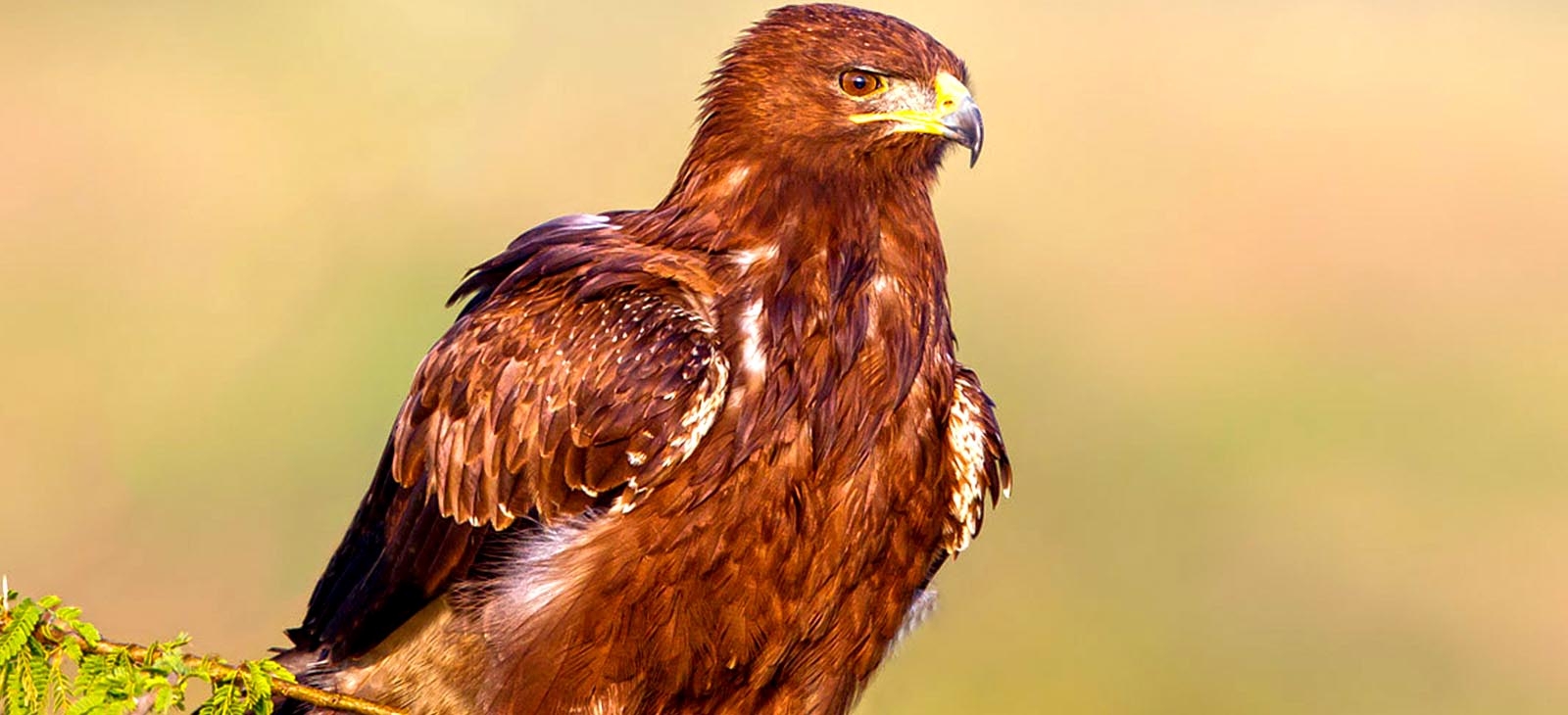The Indian spotted eagle is about 60 cm in length and has a wingspan of 150 cm. It is broad-headed, with the widest mouth of all spotted eagles. This species has a lighter coloration overall compared to its relatives, with a darker iris that makes the eyes appear darker than the plumage (rather than the other way around as in the northern spotted eagles). Adults can be told apart from the greater spotted eagle by its lighter color, darker eyes, and habitat preference.
The Indian spotted eagle (Clanga hastata) is a large South Asian bird of prey. Like all typical eagles, it belongs to the family Accipitridae. The typical eagles are often united with the buteos, sea eagles and other more heavyset Accipitridae, but more recently it appears as if they are less distinct from the more slender accipitrinehawks.
The Indian spotted eagle is about 60 cm in length and has a wingspan of 150 cm. It is broad-headed, with the widest mouth of all spotted eagles. This species has a lighter coloration overall compared to its relatives, with a darker iris that makes the eyes appear darker than the plumage (rather than the other way around as in the northern spotted eagles). Adults can be told apart from the greater spotted eagle by its lighter color, darker eyes, and habitat preference. After about three or four months the young birds are glossy brown with the tips of the head and neck feathers being creamy and giving a spotted appearance. The upper tail coverts are light brown with white giving a barred appearance. The median coverts have large creamy spots. After about eighteen months the bird moults and becomes a darker shade and has less spots. Some older juveniles, unlike the lesser and greater species, are not strongly spotted at all, making the common name somewhat misleading, and also lack the creamy buff nape patch of the juvenile lesser spotted eagle.
The Indian spotted eagle is native in Bangladesh, India, Myanmar and Nepal, where it prefers subtropical and tropical dry forests to plantations and arable land. It is vagrant in Pakistan. In Nepal, it is resident and breeding in Chitwan and Bardia National Parks, in Sukla Phanta and Koshi Tappu Wildlife Reserves and in some unprotected areas in the Terai. In India, it is distributed sparingly over theGangetic plains, in the east up to Manipur, in Madhya Pradesh and southern Orissa, but in the south limited to Kotagiri and Mudumalai, Nilgiris district, Tamil Nadu andTumakuru, Karnataka.
This species can often be approached quite closely for a large raptor. Unlike the greater spotted eagle, which is a winter visitor to Indian wetlands, this species does not show any special affinity for wetland habitats.

